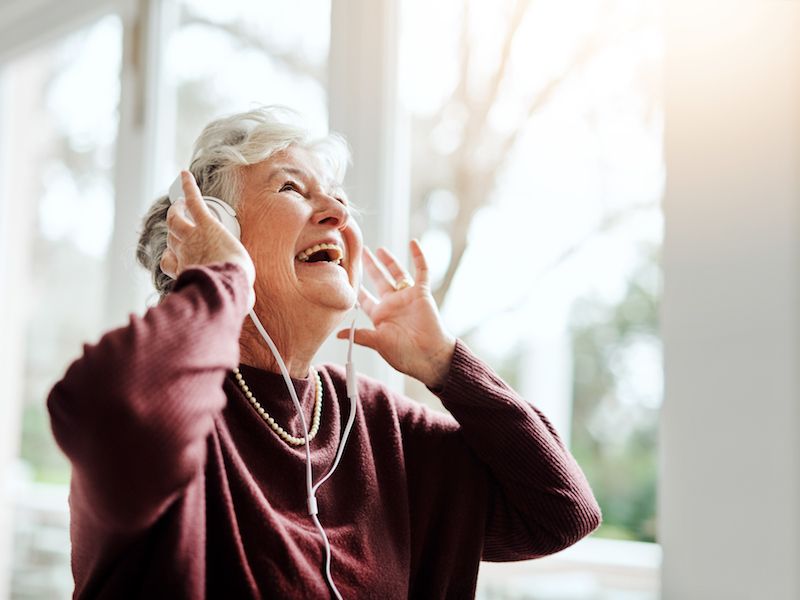
People who work in loud settings like construction sites or at heavy metal concerts are not the only ones affected by noise related hearing loss. Leisure associated noise exposure can be just as damaging as work related noise exposure. The most common kind? Loud noise heard through headphones, whether it be music, gaming, streaming video, or even an audiobook with the volume turned up.
You might not realize your smartphone or tablet can go that loud. But these devices can attain sustained volumes of over 105 dB, which is close to the normal human pain threshold. This is the volume where noise starts to literally hurt your ears. So what can you do to safeguard against this kind of noise-related loss of hearing?
The volume level here is significant. A quick shorthand that’s widely recommended is the 60/60 rule: Listen with the volume at or below 60% for 60 minutes or less in a single session (because how long you listen for matters, too).
Your Hearing Aids Can be Set up For Music
If you have hearing aids, you’re most likely streaming your device right to your hearing aids, so be certain the volume is not too high or that you’re not trying to drown out other sounds with your music. And there are much healthier ways to listen to music so consult us about that also. Hearing aids aren’t made to make music clearer like they do with voices so if really like music, you might have noticed this. While listening to music, we can probably make various adjustments to help better the sound quality and minimize the feedback.
How to Select The Right Headphones
If you don’t own hearing aids, there are lots of choices for buying headphones. There are a few things to think about, although it’s generally a matter of personal preference.
Headphones That go Over The Ears
While the foam-covered speakers that was included with your old Walkman are generally no longer used, over-the-ear headphones have made a comeback. Often unexpectedly high-priced, they provide a large variety of color possibilities and celebrity endorsements, and of course, better sound quality. And unlike those little foam pads, these cover the entire ear, stopping outside noises.
Main-stream perception is that these are safer than in-ear headphones because the source of the sound is further from your eardrum. But because the speakers are larger they are normally capable of much louder volume. Noise cancellation can be a good thing as long as you’re not losing useful sounds like an oncoming car or truck. But on the upside, you don’t need to compete with outside noise so you can enjoy your music at lower volumes.
Earbuds
The normal earbuds that are included with devices such as iPhones are much maligned for their inferior sound quality, but because they come with your phone lots of people still use them. Moreover, with newer versions that no longer have a headphone jack, staying with Apple’s earbuds can simply be easier.
The downside, in addition to the poor sound quality, is that basic earbuds can’t block outside sounds, so that it’s more likely that you will pump up the volume. Once again, though it’s often said that earbuds are problematic because you put them in your ear so their speakers are extremely close to your eardrum, volume is really the biggest concern.
Isolating or Occluding Earbuds
More comfortable than standard earbuds, models that have a round rubber tip are the choice of many because they help stop outside sound. The rubber conforms to the shape of your ear, creating a seal that stops other noises from entering. But these earbuds can also block out sounds you might need to hear and volume is still the primary issue. And if you wear hearing aids, clearly these won’t work for you.
A number of pairs might have to be tested before you find headphones that meet your needs. Depending on what you’re most often using them for talking on the phone, say, versus listening to music, you’ll have unique acoustic expectations. The essential thing is to find headphones that make it comfortable for you to enjoy at a safe and secure volume.
Don’t Cut Corners When it Comes to Your Hearing
How can you be certain it’s okay? There’s an app for that…If you have a smartphone, you can get the National Institute for Occupational Safety and Health’s free Sound Level Meter app. There are other apps you can get, but research has discovered that the reliability of these other apps is spotty (in addition, for reasons yet unknown, Android-based apps have been shown to be less reliable). That motivated NIOSH to develop their own app. The app lets you measure external sounds, but it’s also possible to measure the sound coming from your device’s speakers, so you will know precisely how much volume your ears are getting. You have to put in a little effort, but taking these kinds of protective measures can help safeguard your ears.
